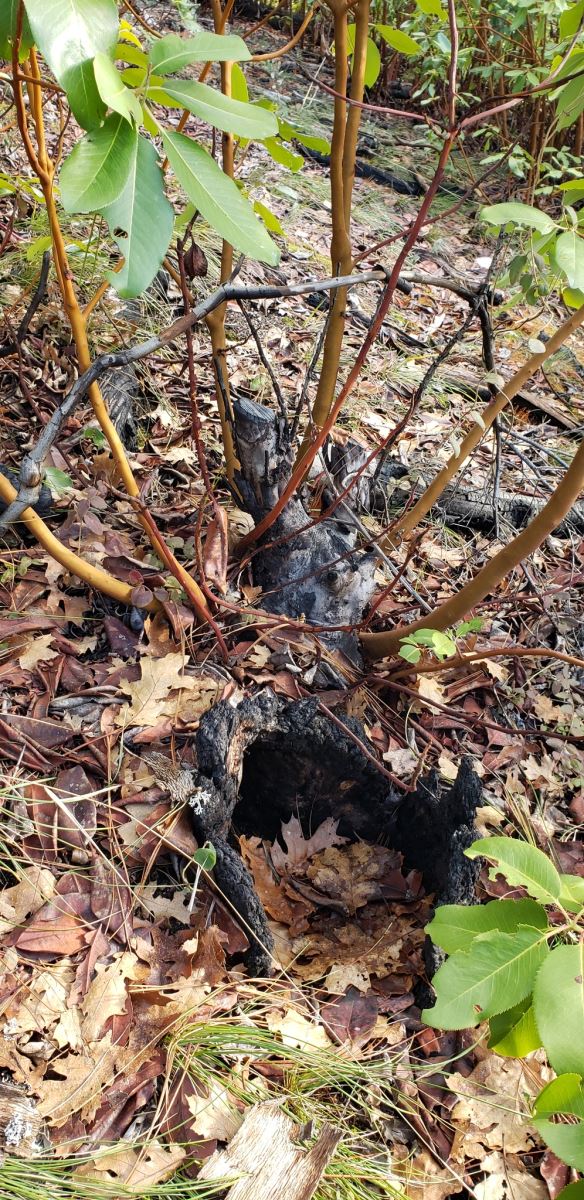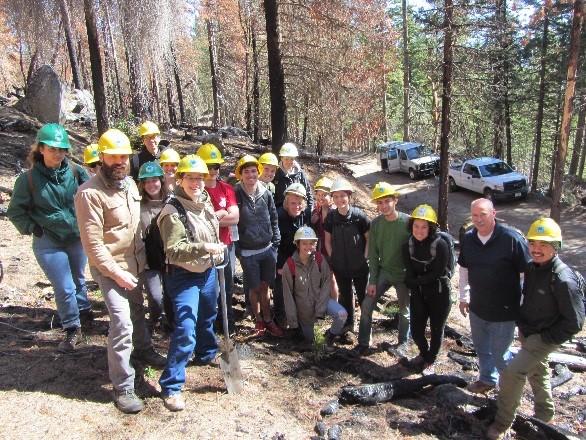University Research
AFR Stewardship Project: Macroinvertebrate Survey and Water Quality Assessment within the
.JPG)
Monitoring and Assessing Macroinvertebrates and Stream Habitat Conditions in the Ashland Watershed, Emily Ho’o Kamalani Long, Department of Environmental Studies, Southern Oregon University Ashland, OR, USA. Long's research provides valuable information about possible changes in the Ashland watershed due to the effects of the Ashland Forest Resiliency Stewardship Project (AFR).
Economic Impact of Wildfire Smoke on Ashland Tourism Industry Prepared For: Dennis Slattery & Ashland Chamber of Commerce, Prepared by: Aldene Sumic, Luke Christianson and Arvin Campollo. Submitted in fulfillment of the requirements for BA 428: Applied Business Research Undergraduate Business Program School of Business, Southern Oregon University Under the supervision of Donna Lane, Associate Professor/ School of Business Chair December 2013. Research was based on surveys of local businesses and quantified economic smoke impacts from wildfires.
.jpg)
Fire in the Ashland Watershed Compared to Regional Fire History: A Systematic Literature Review. Prepared by: Marc Gutches and Clint Nichols, Southern Oregon University Department of Environmental Studies, May, 2014. This research indicates that fire frequency in the Ashland Watershed is similar to the regional fire frequency.
Analyzing the Long-Term Slope Stability within the Research and Natural Area, Ashland Creek Watershed Shane Stiles, Melody Thueson, Narcissa Pricope PhD Department of Environmental Studies, Southern Oregon University. Maps and summaries of slope stability.
Comparison of the flow hydraulics and bedload grain size distribution of the East and West Forks of Ashland Creek, Southwestern Oregon. Prepared by: Aleece M. Richter. Research on the size of material in the East and West Forks demonstrates that sediment size distribution in the Ashland Watershed in relation to basic flow hydraulics and channel geometry parameters can be incorporated into future assessments of sediment entrainment, transport and deposition as they pertain to water quality treatments.
Legacy Tree Monitoring in the Ashland Watershed with the Ashland Forest Resiliency Stewardship Project. Prepared by: Amie Batham and Janel Lajoie for a Senior Capstone Project, Department of Environmental Studies, Southern Oregon University, Spring, 2014. Research revealed that the combination of thinning and prescribed burn produced the highest tree survival rates and drastically reduced fire intensity.

Valuation of Sediment Loads and Water Quality in Reeder Reservoir Following a High-Intensity Fire: A Market Analysis of Ecosystem Goods provided by the Ashland Watershed. Prepared by: Catherine Bergbauer, Jonathan Cowgill and Jacob King, Southern Oregon University, June 18, 2010. The City of Ashland is dependent on drinking water derived from Reeder Reservoir, which is treated locally. This study quantified damage costs avoided from wildfire and demonstrates the need for action, as this study predicts the costs of no action may be detrimental.
Bergbauer, Katie, Jonathan Cowgill, and Jacob King (2011) Ashland Forest Resiliency Project potential impacts on sedimentation. Class project, Advisor: John Gutrich. Research demonstrates the expected ecological consequences associated with treating the excessive sediment loads.
The Response of California Black Oak (Quercus kelloggii) to Ashland Forest Resiliency Fuels Treatments (2018). Prepared by: Arlo Todd & Ollie Bucolo, Southern Oregon University Department of Environmental Science and Policy. The response of sample oaks indicates that AFR treatments do not negatively affect oak growth within 5 years and may benefit oaks that are not in advanced states of decline.
The Pacific Madrone: An Analysis of Resprout Characteristics after Disturbance in the Ashland, Oregon Watershed. Report completed by Emily Newbury and Angela Powell, Southern Oregon University, Department of Environmental Science and Policy in June 2019. The project assessed the resprout characteristics of selected, variously treated, pacific madrone within the Ashland Watershed and determines if multiple treatments act as a catalyst or as a suppressor to the degree of sprouting within the species.
Reed College Research
Ashland Forest Resiliency partners are working closely with Reed College students and professors on research projects in the Ashland Watershed. Mechanical thinning and controlled burns are an important tool in the Ashland Forest Resiliency Project. Monitoring the health and growth of large, old legacy trees is an important part of evaluating the efficacy of this type of management. Reed students are helping with this monitoring effort by collect and analyzing data on Legacy tree survival and growth.
Plant hydraulic traits are emerging as an important way to measure the effects of prescribed fires on forest ecosystems. Reed students are developing novel ways to measure “Heat-plume induced embolism” and other plant traits in the Ashland Watershed.
Foresters bred sugar pine seedlings that are resistant to fungus. Students with Reed College planted 1000 disease resistant Sugar Pines into managed areas in the Ashland Watershed. Recent data indicates the sugar pine seedlings had a high survival rate.
On Earth Day, Reed College Students and Stewardship Coordinator Don Boucher with the Rogue River-Siskiyou National Forest planted 1000 sugar-pines.
